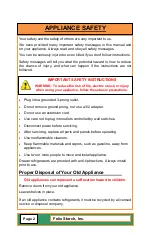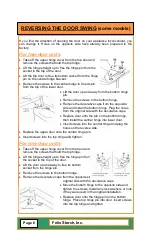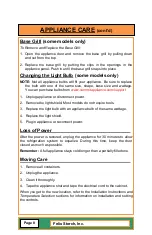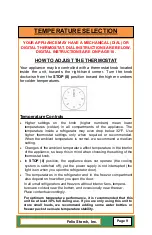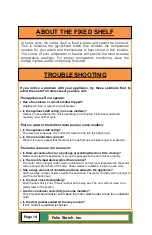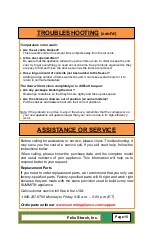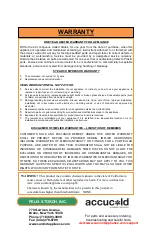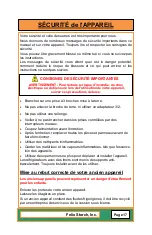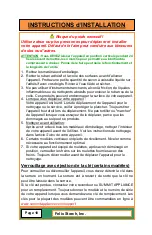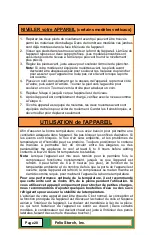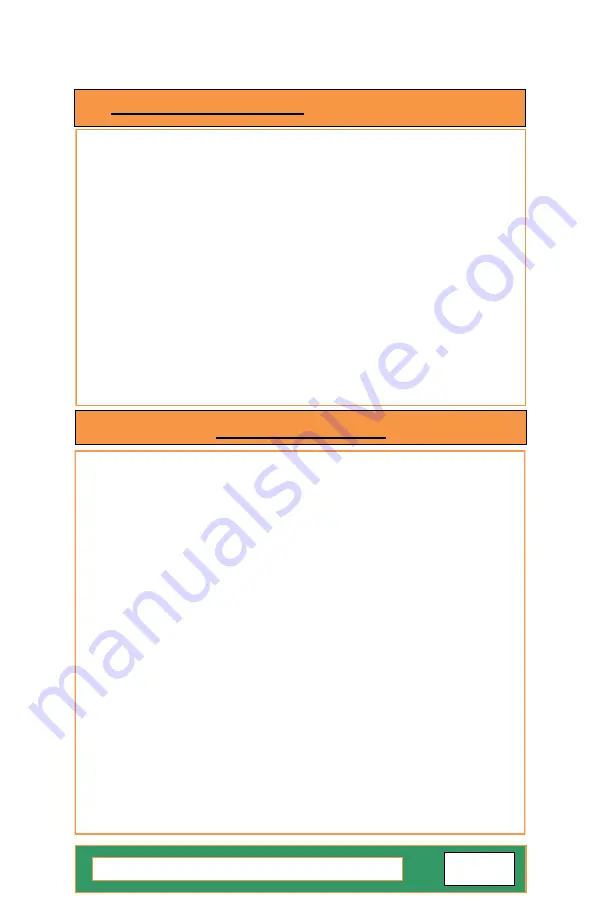
1. Locate the two front leveling legs that may be taped among the packing
materials. In many models these legs are already mounted into the
underside of the appliance.
2. Screw these legs into the front holes on the bottom of the appliance. The
back of the appliance rests on two fixed supports. (Built-in models also
have rear level legs that can provide more precise leveling).
3. Adjust the front legs just enough to lift the cabinet up off the floor.
Note:
If your model is equipped with front rollers, the front legs should be
lowered enough to lift the rollers off of the floor to ensure the appliance
does not roll forward when the door is opened.
4. Place a leveling tool on top of the appliance, first side to side, then front to
back. Turn leg counterclockwise to raise a corner. Turn leg clockwise to
lower a corner.
5. Repeat Step 4 until appliance is level.
6. After appliance is fully loaded, recheck with level as in Step 4.
7.
If your appliance is equipped with casters, the two front casters have
brakes to prevent rolling. Keep brakes locked, and unlock for moving only.
Level your appliance
(some upright models)
APPLIANCE USE
In order to ensure proper temperature, you need to permit proper airflow in
the appliance. Do not block off any air vents. If the vents are blocked, airflow
will be prevented, and temperature and moisture problems may occur. Always
position contents to allow some airflow between shelves or baskets.
Allow the appliance to cool at least 6 to 8 hours before adding contents. Allow
24 hours for temperature to stabilize.
Note:
When the appliance is first started, the compressor will run constantly
until the appliance is cooled. It may take 6 to 8 hours (or longer),
depending on room temperature and the number of times the appliance
door is opened. After the appliance is cooled, the compressor will turn on
and off as needed to keep the appliance at the proper temperature.
For optimum temperature performance, it is recommended that this unit
be at least 30% full during use. If you are only using this unit to store
small loads, we recommend adding some water bottles or freezer packs
to ensure temperature stability.
The outside of your appliance may feel warm. This is normal. The appliance’s
design and main function is to remove heat from packages and air space
inside the appliance. The heat is transferred to the room air, making the
outside of the appliance feel warm.
(In some models the condenser that gets
warm is just inside the side walls, making these walls warm to the touch.)
ENERGY-SAVING TIPS
The more airflow provided around an appliance, the less energy it will use.
If your appliance requires manual defrosting, keep ice build-up to less than 1/2".
Keep doors open a minimum of time, and shut securely.
Felix Storch, Inc.
Page 5


